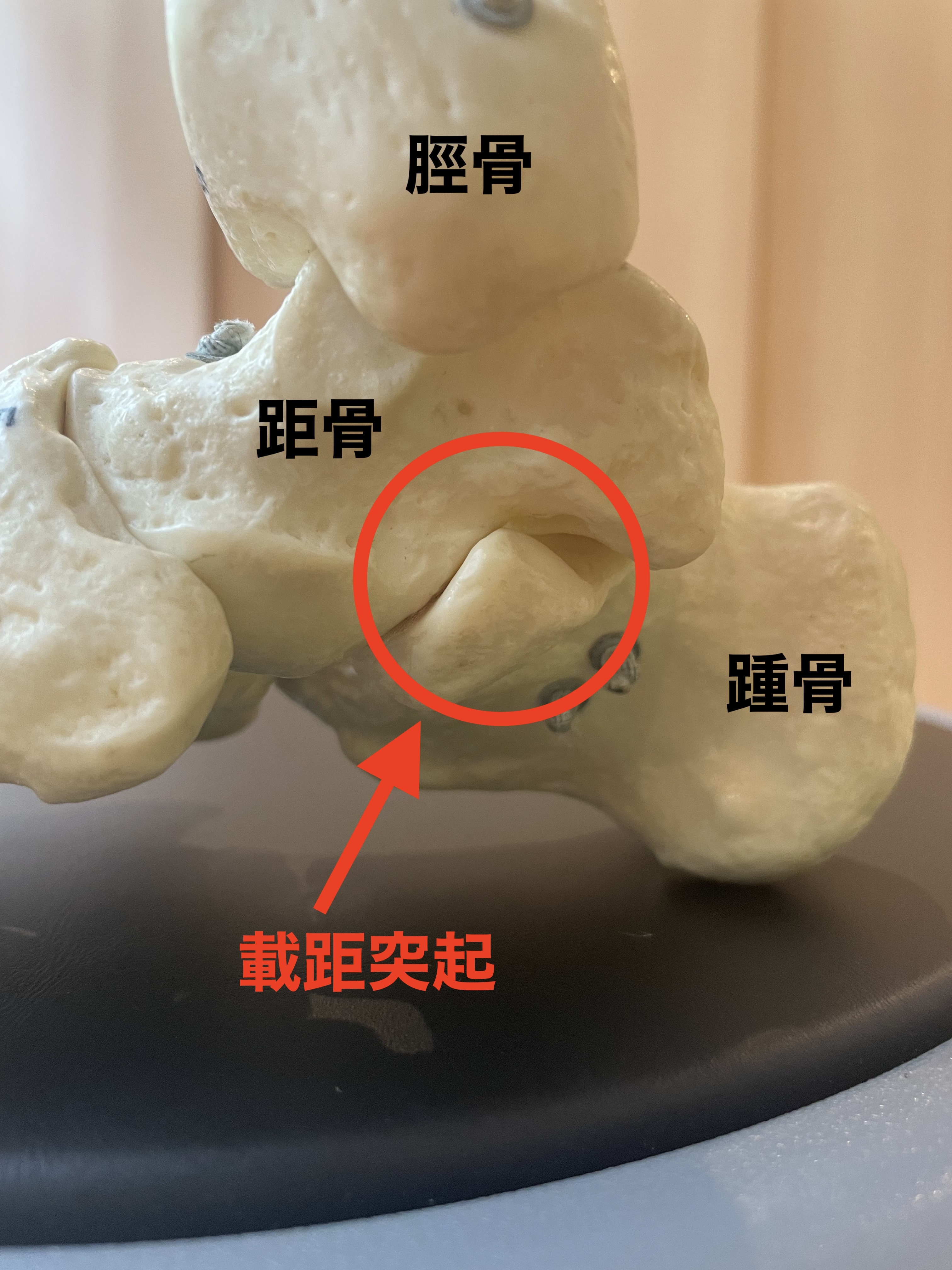研究考察:足底痛と載距突起(さいきょとっき)との関係
足底痛の原因は様々であるが、臨床で感じているのは、足底痛を取り除く上で無視できないのがこの載距突起の存在です。重力下で生活している我々人間にとって、この踵骨と距骨の関節において生じている日々の蓄積が治りにくい足底痛の要因の一つと考えております。そこで、この載距突起と足底痛の関係について考察してみます。
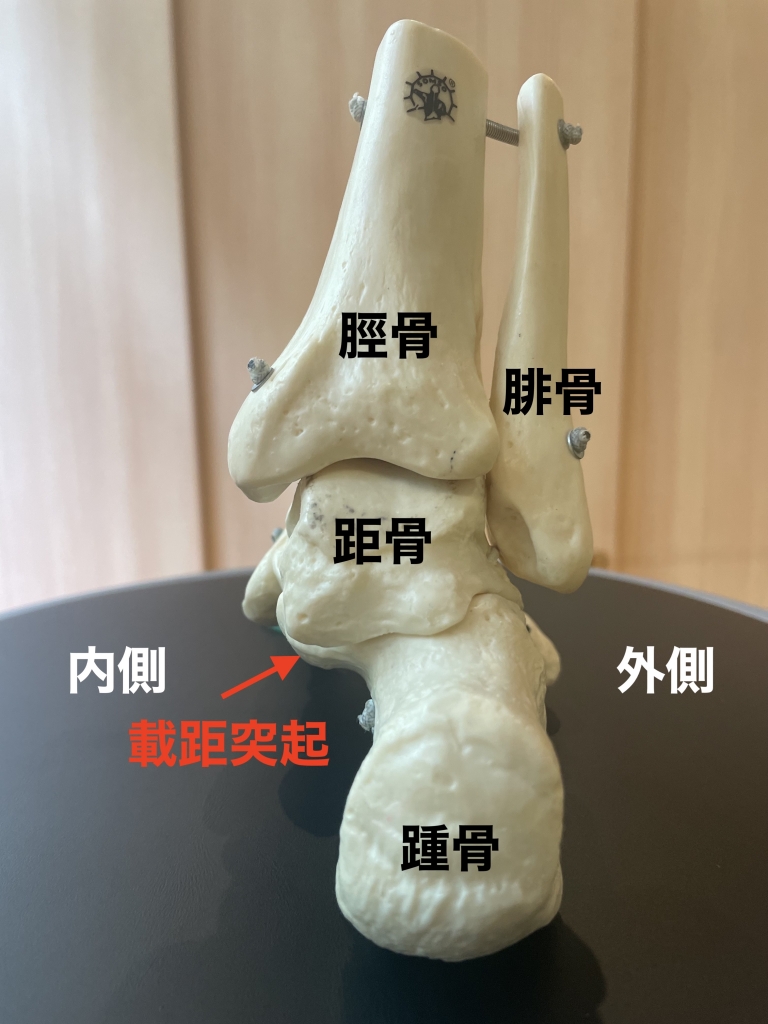
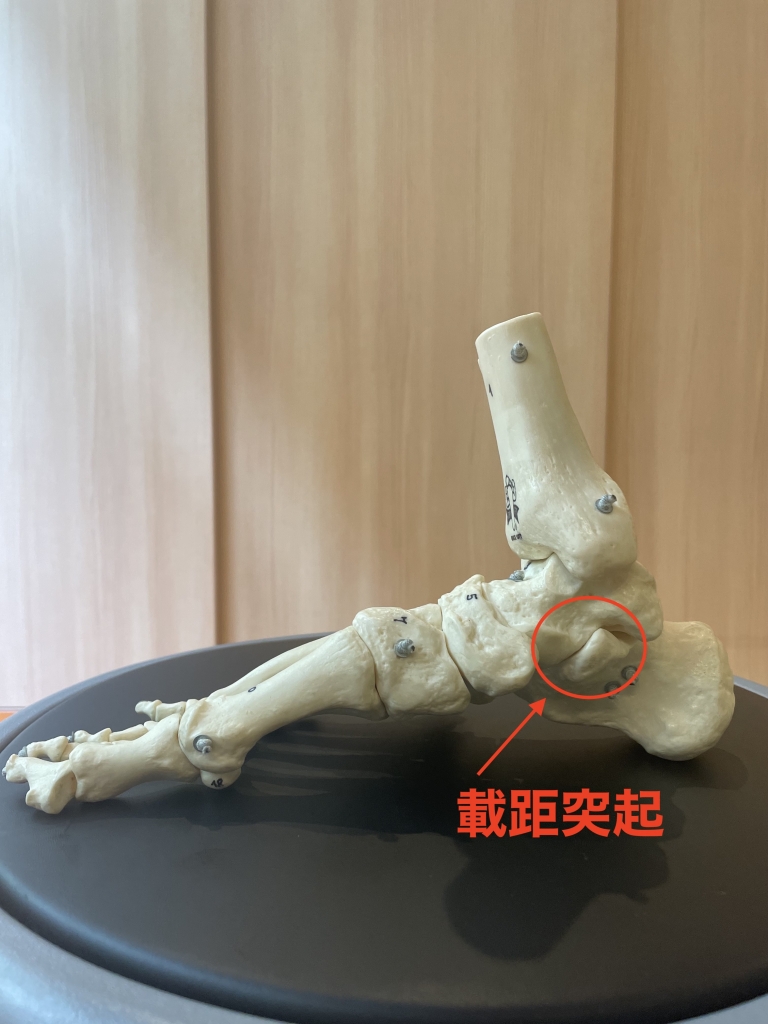
▪️載距突起について
踵骨から伸びている突起で距骨が乗り、その上に足の骨が繋がって行きます。脛骨の下(スネの骨)に位置するので、身体全体の体重がここに集まるわけです。身体の土台と言っても過言ではない部分です。名称も”載せる距骨”で『載距突起』なのです。
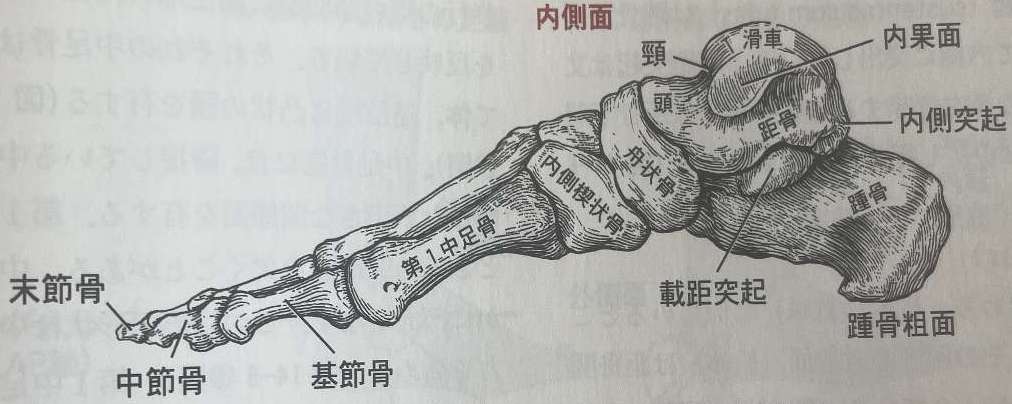
*筋骨格系のキネシオロジー(医歯薬出版)より引用
▪️安定性を司る三角靱帯
以下イラストにあるように、この載距突起には関節安定性を司る三角靱帯が付着しています。身体全体を支える関節になるので、安定性は重要です。この安定性を崩す要因はいくつもありますが、特に重要なのが、長母指屈筋や後脛骨筋に代表する筋群である。
これら筋群が働いていると載距突起が安定して足底アーチも作られますが、これら筋群の機能低下によってアーチが低下し足底痛の原因になることも多々あります。
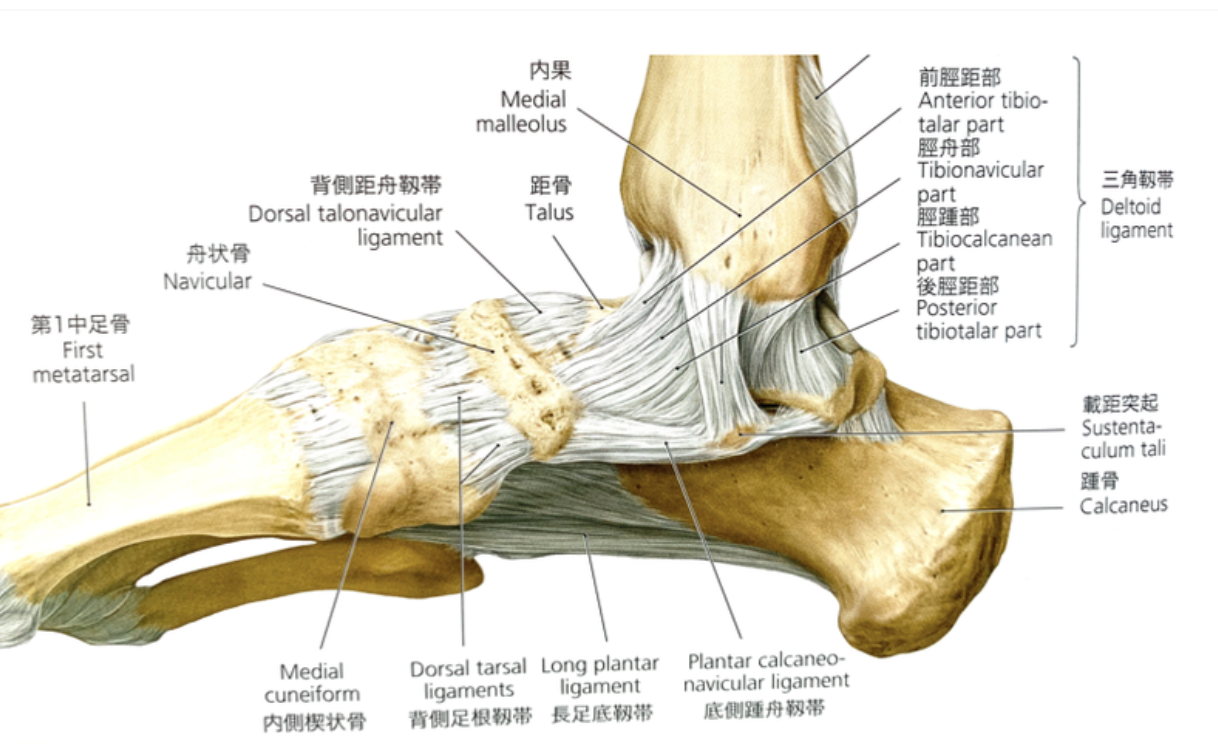
*ネッター解剖学アトラス(南江堂)より引用
▪️足の縦アーチ減少による障害
長母指屈筋や後脛骨筋の筋力が低下することによって、踵骨がぐらつき不安定になると足底痛の発症することが多々あります。これらは、足底筋膜炎・踵部脂肪体炎・骨棘形成などの原因になると考えられます。
▪️後脛骨筋腱機能不全(PTTD)
後脛骨筋腱(こうけいこつきんけん)機能不全(PTTD)という障害があります。この障害は、加齢や捻挫によって内くるぶしの後ろにある後脛骨筋腱が変化して断裂が起こり、扁平足・外反母指・シンスプリントなどが生じる疾患です。PTTDは、中年以降の過体重女性に多いと言われています。後脛骨筋が機能しないと、片足でのつま先立ちが上手くできません。また、長母指屈筋機能障害も同様の症状を起こすと考えております。
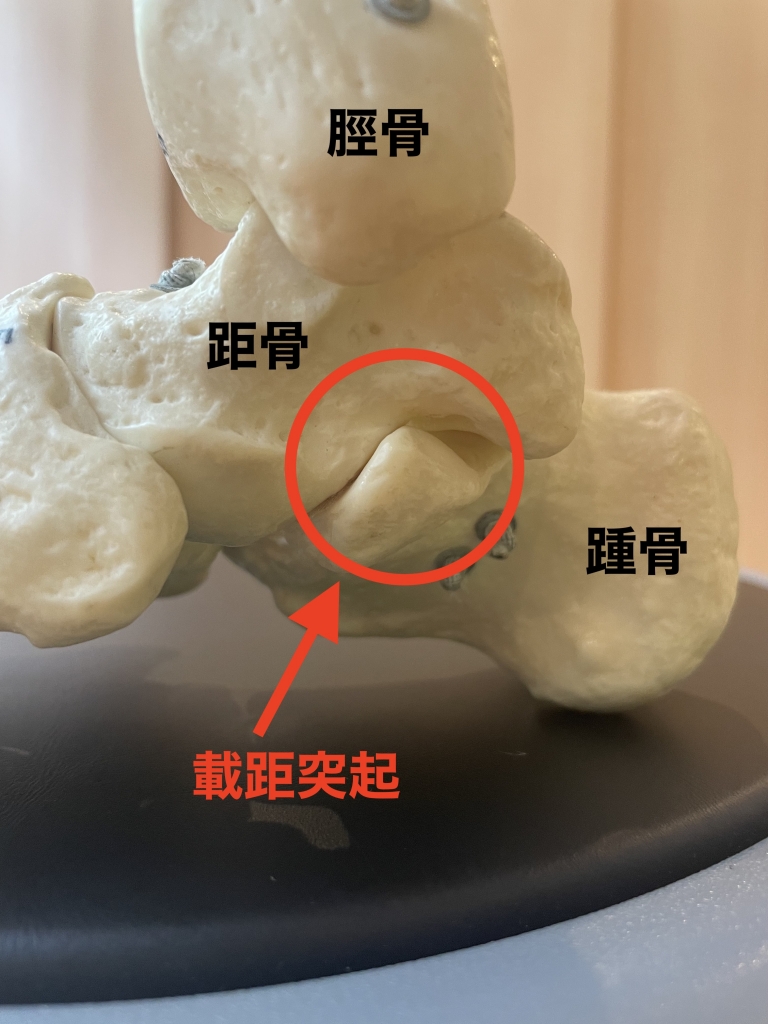
▪️考察
これらの足底痛の原因に「載距突起機能不全症候群」という独自の新しい疾患名を追加したいと思っています。これは私自身が臨床で見てきて、この問題によって足底痛が起きている症例が多いからである。以下にそのメカニズムを解説いたします。
踵骨は筋肉の働き無しでは、とても不安定な骨です。なぜなら、足首を安定させながらも外返し、内返しなど様々な動きを加える必要があるからです。
また、身体の軸の左右差などをこの踵骨・距骨のバランスで補うことができます。しかし、この補うことによって起きたバランスは、足底痛の原因になっているのです。回内足や回外足などで補い、そのバランスが継続することにより累積した筋疲労や関節への過剰な圧迫などが起こりうるのです。
この「載距突起機能不全症候群」には、踵骨と距骨の関節モーションパルペーションを行い、その分析結果から載距突起関節の矯正を行うと効果があると考えます。
KIZUカイロプラクティック
代表院長 木津直昭
==========================================================
Research Discussion: The relationship between plantar pain and the distance process
There are various causes of plantar pain, but the existence of this ramification process cannot be ignored when eliminating plantar pain clinically. We believe that the daily accumulation of pain in the joint between the calcaneus and talus is one of the causes of lingering plantar pain. Therefore, let’s consider the relationship between the distance process and plantar pain.
▪️About the distance projection
The protuberance extending from the heel bone rests on the talus, and on top of that the bones of the foot are connected. It is located under the tibia (shin bone), so the weight of the entire body is concentrated here. It is no exaggeration to say that it is the foundation of the body. The name is also ′′ talus to put on ′′ and it’s ′′ talus process ′′ .
* Quoted from Musculoskeletal Kinesiology (Ishiyaku Publishing)
▪️ Triangular ligament for stability
As shown in the illustration below, the deltoid ligament, which controls joint stability, is attached to this ramification process. Stability is important as these joints support the entire body. There are many factors that can disrupt this stability, but the most important are the muscle groups represented by the flexor pollicis longus and tibialis posterior.
When these muscle groups work, the ramification process stabilizes and the plantar arch is created, but a decrease in the function of these muscle groups often causes the arch to weaken and cause plantar pain.
▪️Disability due to reduction in longitudinal arch of the foot
Weakness of the flexor pollicis longus and tibialis posterior muscles often causes plantar pain when the calcaneus becomes unstable. These are thought to cause plantar fasciitis, heel fat pad inflammation, and osteophyte formation.
▪️Posterior Tibialis Tendon Dysfunction (PTTD)
I have a disorder called posterior tibialis tendon dysfunction (PTTD). This disorder is a disease in which the tibialis posterior muscle tendon behind the inner malleolus changes due to aging or a sprain, resulting in rupture, resulting in flat feet, hallux hallux, shin splints, etc. PTTD is more common in middle-aged and overweight women. If the tibialis posterior muscle does not work well, standing on one leg is not possible. We also believe that dysfunction of the flexor pollicis longus muscle causes similar symptoms.
▪️Discussion
I would like to add a new category of “plantar pain dysfunction syndrome” to these causes of plantar pain, because I myself have seen clinically and there are many cases where plantar pain is caused by this problem. . The mechanism is explained below.
The calcaneus is a very unstable bone without muscle action. This is because it is necessary to add various movements such as turning the ankle outside and turning inside while stabilizing the ankle.
In addition, the balance of the calcaneus and talus can compensate for the left-right difference in the axis of the body. However, the balance caused by this compensation is the cause of plantar pain. Compensating for pronation and supination, and maintaining that balance can lead to accumulated muscle fatigue and excessive pressure on joints.
We believe that for this “tarsus dysfunction syndrome”, joint motion palpation of the calcaneus and talus is performed, and based on the analysis results, correction of the talus joint is considered to be effective.
Kizu Chiropractic
Representative Director Tadaaki Kizu

